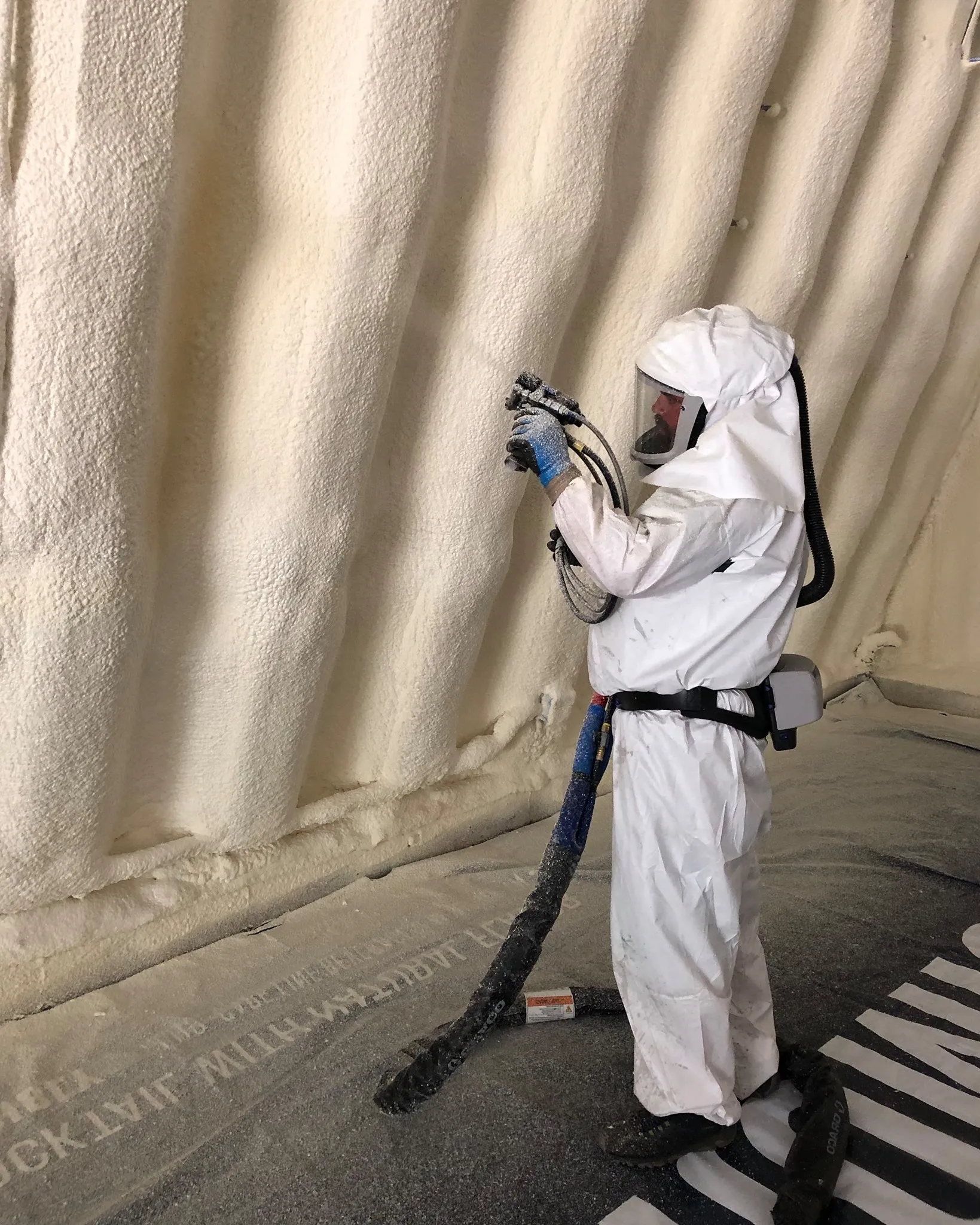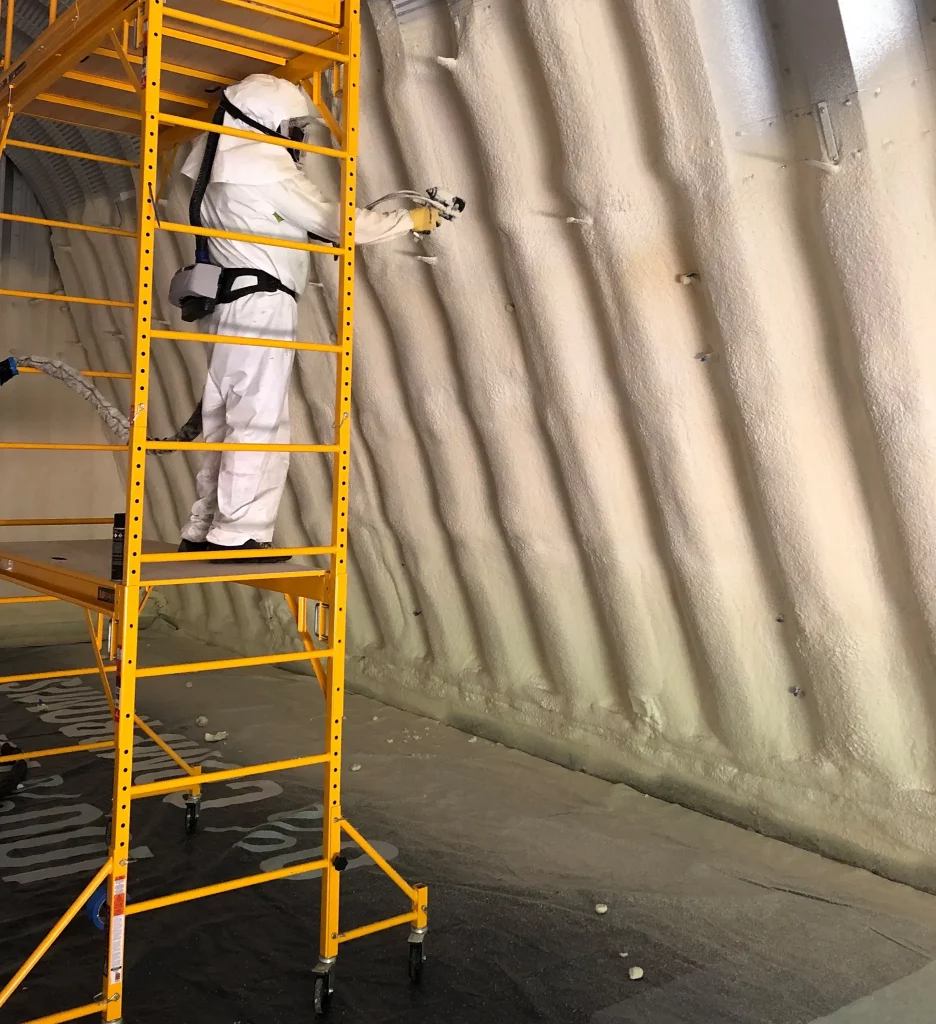
Spray foam insulation is a highly effective tool for controlling moisture in a building. Its ability to create a continuous air barrier is its most important feature. By expanding to fill gaps, cracks, and crevices, spray foam stops air movement, which is the primary way moisture travels into and through a structure. Different types of spray foam offer varying levels of water vapor resistance, allowing for tailored applications that protect a property from condensation, humidity, and bulk water intrusion.
This guide explains how spray foam works to manage moisture, the key differences between the available types, and what to consider before insulation installation. The information provided is based on extensive field experience and established building science principles, offering a clear path to understanding this insulation method. Lamothe Spray Foam Insulation has seen firsthand how a properly executed installation can safeguard a building’s structural integrity and improve indoor air quality.
Moisture problems in buildings are almost always linked to uncontrolled air leakage. Warm, humid air from inside can travel into a cold wall cavity and condense, leading to rot and mold. Likewise, damp outdoor air can infiltrate the building envelope. According to the U.S. Department of Energy, air leaks can account for a significant amount of a home’s heating and cooling costs, but they also create pathways for moisture.
Spray polyurethane foam (SPF) is applied as a liquid that expands and hardens in place. This process creates a monolithic, custom-fitted layer of insulation that adheres directly to the substrate. Unlike traditional insulation batts, which can have gaps and seams, spray foam leaves no voids for air to pass through. This air-sealing quality is the foundation of its moisture-control capabilities. By stopping the air, it stops the moisture the air is carrying.
The two main types of spray foam, open-cell and closed-cell, handle moisture very differently. Choosing the right one depends entirely on the application, climate, and specific goals for the project.
Closed-cell foam is dense and rigid, with each tiny bubble of gas completely enclosed. This structure makes it highly resistant to both air and water vapor. In fact, the International Code Council recognizes closed-cell spray foam as a vapor retarder when applied at a sufficient thickness, often eliminating the need for a separate plastic vapor barrier.
Open-cell foam is lighter, softer, and more flexible. Its cells are interconnected, which allows water vapor to pass through it more easily. While it is an excellent air barrier, it is not a vapor retarder. This can be an advantage in certain situations where allowing a wall assembly to dry out is important.
| Feature | Closed-Cell Spray Foam | Open-Cell Spray Foam |
|---|---|---|
| Vapor Permeability | Very Low (Acts as a vapor retarder) | High (Vapor permeable) |
| Water Resistance | Resists bulk water | Will absorb water |
| R-Value per Inch | R-6.5 to R-7 | R-3.5 to R-3.8 |
| Structure | Rigid, adds structural strength | Spongy and flexible |
| Common Uses | Basements, crawl spaces, continuous exterior insulation | Attics, walls in mixed-humid climates |
Bonus Tip: In a basement or crawl space in a cold climate like New England, closed-cell foam is almost always the correct choice. Its ability to block moisture from concrete walls is essential for preventing dampness and mold in below-grade spaces.
Different parts of a building have unique vulnerabilities to moisture. Applying the right type of spray foam in these key areas can prevent long-term damage.
In an unvented attic assembly, applying spray foam directly to the underside of the roof deck moves the building’s insulation layer from the attic floor to the roofline. This creates a conditioned or semi-conditioned attic space, which helps prevent ice dams in cold climates. Closed-cell foam is often used for its high R-value and ability to block water in case of a roof leak. Open-cell foam can also be used, but it requires careful attention to vapor control.
Crawl spaces and basements are notorious for moisture problems. Encapsulating a crawl space with closed-cell spray foam on the walls and rim joists creates a clean, dry area. It isolates the home from the damp ground, preventing moisture evaporation into the living space. A study by Advanced Energy found that closed, unvented crawl spaces significantly reduce moisture levels and energy consumption compared to traditional vented ones.
The rim joist, or band joist, is the wooden perimeter of the floor framing. This area is a major source of air leakage and is prone to condensation because it’s a thin barrier between inside and outside temperatures. Spray foam is an ideal solution here, as it completely air-seals this complex junction of wood and concrete.
Bonus Tip: Before insulating a rim joist, inspect the area for any signs of water damage or rot. Sealing in existing moisture can make the problem worse. Any leaks or dampness must be resolved before foam is applied.
Spray foam is an advanced building material, and its performance depends on several factors beyond the product itself.

Closed-cell spray foam is considered water-resistant and will reject bulk water. It can be a critical part of a water-resistant barrier. Open-cell foam, on the other hand, is not waterproof and will absorb water if it gets wet.
When installed correctly and not exposed to direct sunlight (which degrades it), spray foam should last for the life of the building. It is a stable material that does not sag, settle, or lose its insulating properties over time.
Closed-cell spray foam, when applied at the right thickness (usually around 2 inches), functions as its own vapor barrier, so an additional one is typically not needed. Open-cell foam is vapor-permeable and may require a separate vapor-retarding paint or membrane, depending on the climate and wall assembly design.
Spray foam offers no nutritional value to pests. While insects or rodents could technically tunnel through it, they are far less likely to do so compared to fiberglass or cellulose. Its air-sealing properties also help by blocking the small entry points pests use to get into a home.
Properly installed spray foam insulation is an excellent defense against moisture, offering a combined air barrier, insulator, and often a vapor retarder in a single application. The key is selecting the right type of foam for the specific location and climate and ensuring the installation is done by a qualified professional. Before moving forward, evaluate your property’s specific needs, ventilation strategy, and long-term performance goals.
Understanding your home’s unique moisture challenges is the first step toward a durable solution. For a thorough evaluation and professional guidance, consider contacting an experienced team. You can reach Lamothe Spray Foam Insulation to discuss your project by calling (508) 847-0119 or sending an email to [email protected].